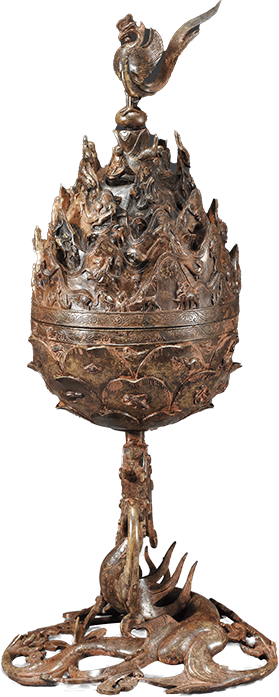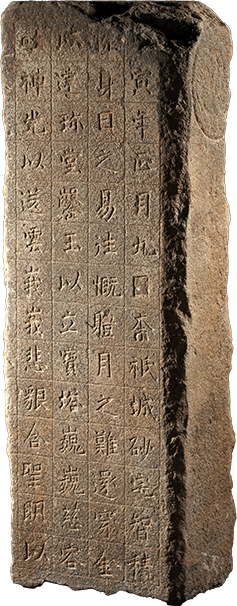Review of the handicraft skills,
religion and culture of Baekje
Sabi Baekje and the Great Gilt-Bronze Incense Burner of Baekjeand the Culture of the Capital
Chapter 1 Relocation of Baekje’s Capital to Sabi and the Culture
of the Capital introduces the uniquely refined and elegant culture developed
by Baekje based on the plan to move the capital to Sabi (today’s Buyeo) and
the culture associated with the royal capital.
This silver flower-shaped crown ornament was made by drawing the design of flower buds and stems on a double-layered silver sheet and cutting it with a knife or scissors. Both sides of the ornament are symmetrical. The bottom of the ornament is sharp enough to insert it into a crown.
View More
Chapter 2 Temple Site in Neungsan-ri and the Great Gilt-Bronze Incense Burner of Baekje introduces the history of a temple that was built by Baekje’s King Wideok for his deceased father King Seong in Neungsan- ri and the relics unearthed from the site, including the Great Gilt-Bronze Incense Burner of Baekje.
The lid of the incense burner bears a sculpted figurine of a heavenly phoenix. The apex of the burner, which consists of layers in five different directions, bears images of people who appear to be engaged in mental training and meditation, and images of imaginary animals.
View More
Chapter 3 Culture of Baekje Engraved on Wood and Stone Artifacts offers visitors an opportunity to discover how people lived during the Baekje period through the characters inscribed on wood and stone artifacts discovered in Buyeo.
This Monument bears an elegant and refined inscription carved in a highly stylized style that was prevalent in the Six Dynasties of China. A Sataekjijeok, or high-ranking official, had this monument erected in 654, along with a temple and a stele. The content of the inscription shows that he lamented the evanescence of life and intended to devote himself to Buddhism, revealing aspects of the nobility’s spiritual life during the Baekje period.
View More
refined culture of the Royal Capital, which was relocated to Sabi (today’s Buyeo).



